-
 Bitcoin
Bitcoin $108,338.0981
-0.13% -
 Ethereum
Ethereum $2,566.4077
1.16% -
 Tether USDt
Tether USDt $1.0001
-0.01% -
 XRP
XRP $2.2841
-2.59% -
 BNB
BNB $658.5241
-0.17% -
 Solana
Solana $150.3819
-1.08% -
 USDC
USDC $0.9999
-0.01% -
 TRON
TRON $0.2864
-0.24% -
 Dogecoin
Dogecoin $0.1694
0.24% -
 Cardano
Cardano $0.5813
-0.72% -
 Hyperliquid
Hyperliquid $37.8292
-4.60% -
 Bitcoin Cash
Bitcoin Cash $503.3593
1.69% -
 Sui
Sui $2.8784
-0.69% -
 Chainlink
Chainlink $13.4784
-0.43% -
 UNUS SED LEO
UNUS SED LEO $9.0793
-0.27% -
 Stellar
Stellar $0.2537
-0.41% -
 Avalanche
Avalanche $18.0047
-0.23% -
 Shiba Inu
Shiba Inu $0.0...01181
1.56% -
 Hedera
Hedera $0.1608
0.49% -
 Toncoin
Toncoin $2.7568
-0.93% -
 Litecoin
Litecoin $86.4121
-0.20% -
 Monero
Monero $313.7273
-0.86% -
 Polkadot
Polkadot $3.3715
-0.66% -
 Dai
Dai $1.0001
0.01% -
 Ethena USDe
Ethena USDe $1.0004
0.03% -
 Bitget Token
Bitget Token $4.2902
-0.54% -
 Uniswap
Uniswap $7.5361
2.73% -
 Aave
Aave $285.6090
-0.55% -
 Pepe
Pepe $0.0...09958
0.28% -
 Pi
Pi $0.4560
-0.65%
How to perform token swaps in Coinbase Wallet?
2025/03/25 03:01
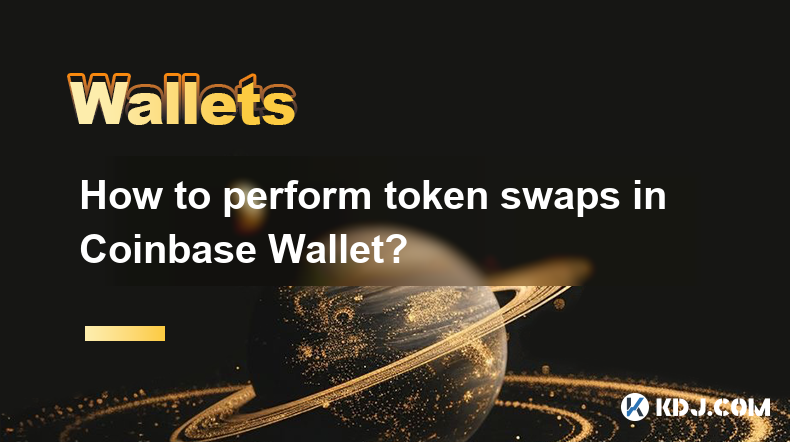
Key Points:
- Coinbase Wallet supports token swaps through various decentralized exchanges (DEXs) integrated within the app.
- The process involves selecting the tokens you want to swap, confirming the transaction details, and approving the transaction on your wallet.
- Gas fees, network congestion, and slippage are important factors to consider when performing token swaps.
- Understanding the risks involved, including potential scams and impermanent loss, is crucial before initiating any swap.
- Coinbase Wallet's user-friendly interface simplifies the swapping process, but prior knowledge of blockchain technology and DEXs is beneficial.
How to Perform Token Swaps in Coinbase Wallet?
Coinbase Wallet offers a convenient in-app experience for swapping various tokens. It leverages partnerships with different decentralized exchanges (DEXs), allowing users to trade directly from their wallet. The process is designed to be user-friendly, but a basic understanding of cryptocurrency and DEXs is recommended.
Before you begin, ensure you have the tokens you wish to swap already in your Coinbase Wallet. You'll also need sufficient network fees (gas) to cover the transaction costs. These fees vary depending on the network and its congestion. Check your wallet's balance and the current gas prices before proceeding.
To initiate a token swap, open your Coinbase Wallet app and navigate to the "Swap" or "Trade" section. This section's location might vary slightly depending on your app version. Look for a prominent icon or tab labeled similarly.
Once in the swap section, you'll be prompted to select the token you wish to swap from and the token you want to receive to. Enter the amount of the source token you intend to exchange. The wallet will automatically calculate the approximate amount of the target token you'll receive, taking into account the current market price and any fees.
After entering the desired amounts, review the transaction details carefully. Pay close attention to the exchange rate, the fees, and the total amount of the source token being used. Ensure you understand the potential for slippage, which is the difference between the expected exchange rate and the actual rate at the time the transaction is finalized. Network congestion can significantly impact slippage.
The next step is to approve the transaction. This usually involves confirming the transaction on your device, often by entering your wallet's password or confirming via biometric authentication (fingerprint or face ID). Once confirmed, the swap will be initiated, and the process may take some time depending on network conditions.
Understanding the DEXs and Network Fees
Coinbase Wallet integrates with various DEXs. These DEXs operate differently and may have varying fees and functionalities. While Coinbase Wallet simplifies the process, understanding the underlying DEX involved is crucial. Research the DEX used for your specific swap to better understand its fees and mechanisms.
Network fees, also known as gas fees, are crucial. These fees are paid to the miners or validators on the blockchain to process your transaction. High network congestion leads to higher gas fees. Monitoring gas prices and timing your swaps during periods of lower congestion can save you significant costs.
Risk Management and Security
Always double-check the address you're sending tokens to. Ensure it's the correct address for the receiving token and the intended recipient. Mistakes can result in irreversible loss of funds. Be wary of phishing attempts and only use the official Coinbase Wallet app. Never share your seed phrase or private keys with anyone.
Understand the concept of impermanent loss, especially if using decentralized exchanges. Impermanent loss refers to the potential loss incurred when the price of your swapped tokens changes after the swap. It’s important to understand these risks before making any significant trades. Thoroughly research the tokens involved before initiating any swaps.
Common Questions:
Q: What if my swap fails?
A: If a swap fails, the funds usually remain in your wallet. Check the transaction details for any error messages and contact Coinbase Wallet support if needed. The reasons for failure can include insufficient funds, high gas fees, or network issues.
Q: Can I swap any token?
A: Coinbase Wallet supports a wide range of tokens, but not all. Check the available token list within the app's swap function to see if your desired tokens are supported. The availability of tokens can also depend on the specific DEX used by the wallet.
Q: What are the fees involved in a token swap?
A: Fees comprise network fees (gas fees) paid to the blockchain and potential fees charged by the decentralized exchange used for the swap. These fees can vary significantly depending on network congestion and the DEX’s fee structure. Always review the transaction details before confirming.
Q: Is it safe to use Coinbase Wallet for token swaps?
A: Coinbase Wallet employs security measures, but cryptocurrency transactions inherently carry risks. Practice good security habits, such as using a strong password, enabling two-factor authentication, and being vigilant against phishing attempts. Remember that you are solely responsible for your private keys and the security of your wallet.
Q: How long does a token swap take?
A: The time required for a swap varies greatly depending on network congestion. During periods of high network activity, swaps can take longer. The process can range from a few seconds to several minutes or even longer. Monitor the transaction status within your wallet to track its progress.
부인 성명:info@kdj.com
제공된 정보는 거래 조언이 아닙니다. kdj.com은 이 기사에 제공된 정보를 기반으로 이루어진 투자에 대해 어떠한 책임도 지지 않습니다. 암호화폐는 변동성이 매우 높으므로 철저한 조사 후 신중하게 투자하는 것이 좋습니다!
본 웹사이트에 사용된 내용이 귀하의 저작권을 침해한다고 판단되는 경우, 즉시 당사(info@kdj.com)로 연락주시면 즉시 삭제하도록 하겠습니다.
- Tether 's Gold Rush : 80 억 달러의 스위스 금고 및 Stablecoins의 미래
- 2025-07-09 02:50:13
- Cardano Price : Ada의 미래에 고래 축적 힌트?
- 2025-07-09 03:30:12
- Blockdag, defi, & crypto laffles : 다음 큰 일?
- 2025-07-09 03:35:12
- 마구간, 맨틀 및 Stablecoin 유틸리티 : 암호화 지불을위한 새로운 시대?
- 2025-07-09 02:50:13
- Atom Bullish Breakout : 암호화 감정 및 우주 생태계
- 2025-07-09 02:55:12
- 크라켄, 리어 윙 및 메모 코인 : 싱가포르 그랑프리로가는 거친 타기!
- 2025-07-09 00:50:12
관련 지식

트레 조의 암호를 잊어 버리면 어떻게됩니까?
2025-07-09 03:15:08
Trezor 암호화의 역할 이해 Trezor 하드웨어 지갑을 사용하는 경우 복구 시드 이상의 추가 보안 계층으로 암호를 설정했을 수 있습니다. 장치와 함께 제공되는 12 또는 24 단어 복구 문구와 달리 Trezor 암호는 숨겨진 지갑 수정 자처럼 작용합니다. 입력하면...
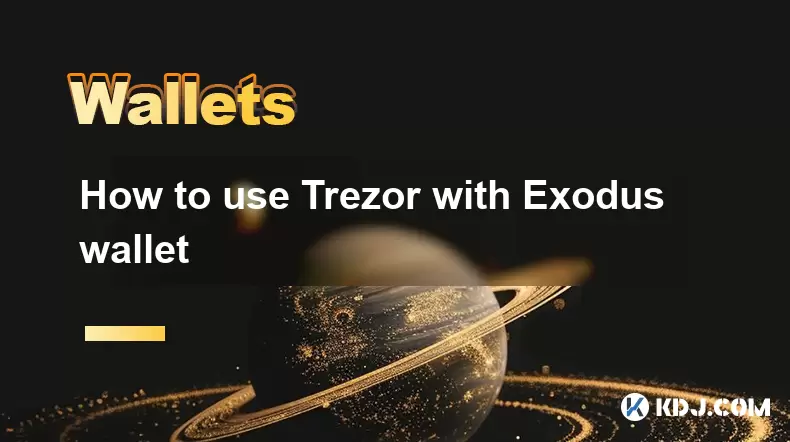
Exodus 지갑과 함께 Trezor를 사용하는 방법
2025-07-09 00:49:34
Trezor 하드웨어 지갑을 Exodus 소프트웨어 지갑에 연결합니다 Exodus 지갑 과 함께 Trezor를 사용하려면 사용자는 하드웨어 지갑을 Exodus가 제공하는 소프트웨어 인터페이스에 연결해야합니다. 이 통합은 사용자 친화적 인 인터페이스를 통해 디지털 자산을...
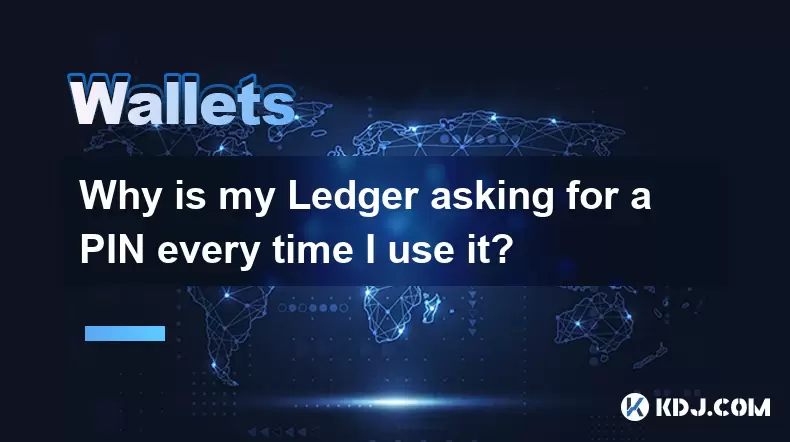
원장이 핀을 사용할 때마다 핀을 요구하는 이유는 무엇입니까?
2025-07-08 23:21:50
원장 장치의 PIN 목적 이해 PIN (개인 식별 번호) 은 모든 원장 하드웨어 지갑에 내장 된 중요한 보안 기능입니다. 주요 기능은 장치를 무단 액세스로부터 보호하는 것입니다. 원장을 처음 설정하면 Cryptocurrency holdings의 첫 번째 방어 계층 역할...
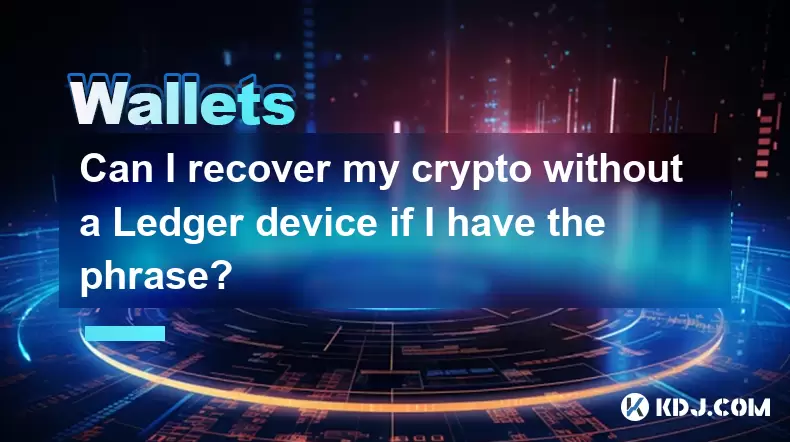
문구가있는 경우 원장 장치없이 암호화를 복구 할 수 있습니까?
2025-07-09 01:36:01
암호화 보안에서 복구 문구의 역할 이해 회복구가 있지만 원장 장치가 없는 경우 암호 화폐를 복구 할 수 있는지 궁금 할 것입니다. 짧은 대답은 예입니다. 복구 문구가있는 경우 원장 장치없이 암호화를 복구 할 수 있습니다 . 이는 종자 문구라고도하는 복구 문구가 인간이 ...
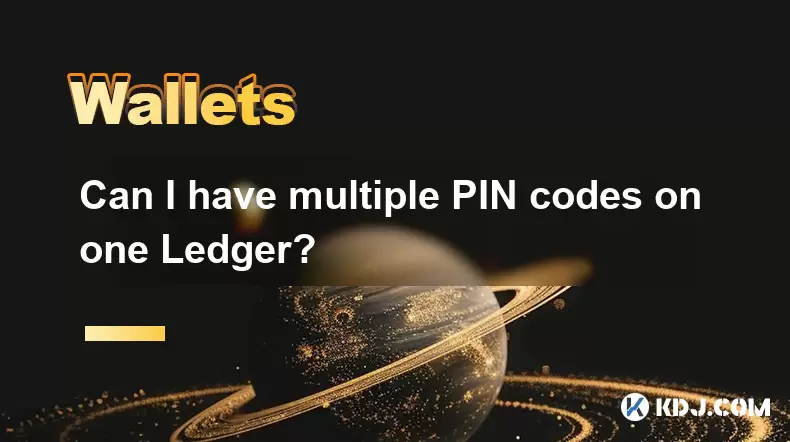
한 원장에 여러 핀 코드를 가질 수 있습니까?
2025-07-09 00:35:18
분산 거래소의 기본 이해 (DEXS) 분산 교환 또는 DEX는 중앙 권한없이 운영되는 유형의 암호 화폐 거래 플랫폼입니다. 기존 중앙 집중식 거래소 (CEX)와 달리 DEXS는 사용자가 자금을 거래소 자체에 입금 할 필요없이 지갑에서 직접 거래 할 수 있도록 허용합니다...
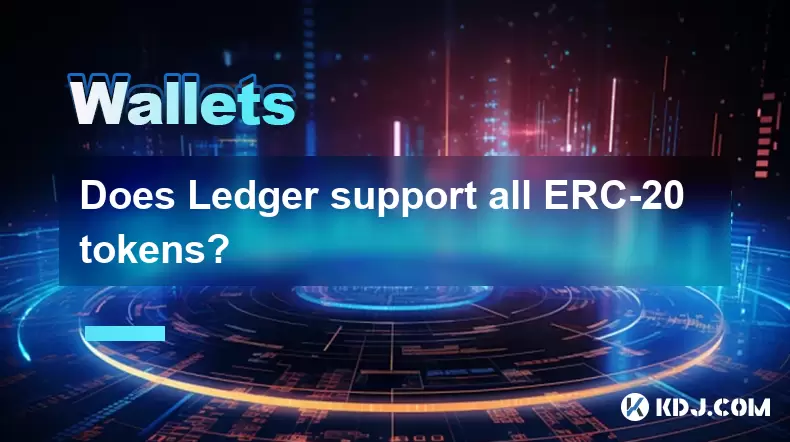
원장은 모든 ERC-20 토큰을 지원합니까?
2025-07-09 03:42:56
원장 지갑과 그들의 토큰 지원 이해 원장 나노 및 원장 나노 X와 같은 원장 지갑은 암호 화폐를 안전하게 저장하도록 설계된 하드웨어 지갑입니다. 이 장치는 개인 키를위한 오프라인 스토리지를 제공하여 온라인 위협에 대한 높은 수준의 보안을 제공합니다. 그러나 이더 리움 ...

트레 조의 암호를 잊어 버리면 어떻게됩니까?
2025-07-09 03:15:08
Trezor 암호화의 역할 이해 Trezor 하드웨어 지갑을 사용하는 경우 복구 시드 이상의 추가 보안 계층으로 암호를 설정했을 수 있습니다. 장치와 함께 제공되는 12 또는 24 단어 복구 문구와 달리 Trezor 암호는 숨겨진 지갑 수정 자처럼 작용합니다. 입력하면...

Exodus 지갑과 함께 Trezor를 사용하는 방법
2025-07-09 00:49:34
Trezor 하드웨어 지갑을 Exodus 소프트웨어 지갑에 연결합니다 Exodus 지갑 과 함께 Trezor를 사용하려면 사용자는 하드웨어 지갑을 Exodus가 제공하는 소프트웨어 인터페이스에 연결해야합니다. 이 통합은 사용자 친화적 인 인터페이스를 통해 디지털 자산을...

원장이 핀을 사용할 때마다 핀을 요구하는 이유는 무엇입니까?
2025-07-08 23:21:50
원장 장치의 PIN 목적 이해 PIN (개인 식별 번호) 은 모든 원장 하드웨어 지갑에 내장 된 중요한 보안 기능입니다. 주요 기능은 장치를 무단 액세스로부터 보호하는 것입니다. 원장을 처음 설정하면 Cryptocurrency holdings의 첫 번째 방어 계층 역할...

문구가있는 경우 원장 장치없이 암호화를 복구 할 수 있습니까?
2025-07-09 01:36:01
암호화 보안에서 복구 문구의 역할 이해 회복구가 있지만 원장 장치가 없는 경우 암호 화폐를 복구 할 수 있는지 궁금 할 것입니다. 짧은 대답은 예입니다. 복구 문구가있는 경우 원장 장치없이 암호화를 복구 할 수 있습니다 . 이는 종자 문구라고도하는 복구 문구가 인간이 ...

한 원장에 여러 핀 코드를 가질 수 있습니까?
2025-07-09 00:35:18
분산 거래소의 기본 이해 (DEXS) 분산 교환 또는 DEX는 중앙 권한없이 운영되는 유형의 암호 화폐 거래 플랫폼입니다. 기존 중앙 집중식 거래소 (CEX)와 달리 DEXS는 사용자가 자금을 거래소 자체에 입금 할 필요없이 지갑에서 직접 거래 할 수 있도록 허용합니다...

원장은 모든 ERC-20 토큰을 지원합니까?
2025-07-09 03:42:56
원장 지갑과 그들의 토큰 지원 이해 원장 나노 및 원장 나노 X와 같은 원장 지갑은 암호 화폐를 안전하게 저장하도록 설계된 하드웨어 지갑입니다. 이 장치는 개인 키를위한 오프라인 스토리지를 제공하여 온라인 위협에 대한 높은 수준의 보안을 제공합니다. 그러나 이더 리움 ...
모든 기사 보기

























































































